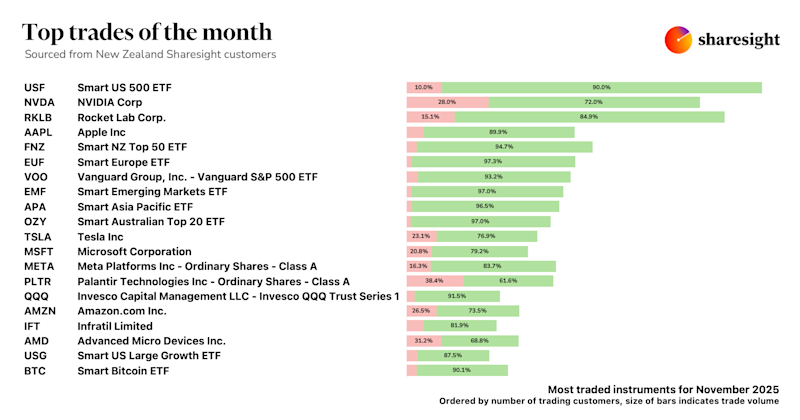How to calculate a stock's dividend growth rate
If you’re a dividend investor, you may have seen the term "dividend growth rate" mentioned as a measure of a promising dividend stock. The dividend growth rate is the annualised percentage rate of growth that a stock’s dividend will experience over time. Used in tandem with other metrics, the dividend growth rate can be an effective way to evaluate a dividend stock. To learn more about how the dividend growth rate is calculated, how it can be used and how Sharesight helps investors keep track of their dividends, keep reading.

How do you calculate the dividend growth rate?
The dividend growth rate of a stock can be calculated using any period of time; typically annually but it can also be half-yearly or quarterly. To calculate the annual dividend growth rate, for example, you will need to compare the dividend payment from one year to the next, using the following formula:
(year 2 value / year 1 value) - 1.
Once you have found the dividend growth rate for several consecutive years, you can take the arithmetic average of these figures to come up with a forward-looking growth rate. For example, ( 4% + 5.5% + 3% + 7% ) / 4 = 4.875 or 4.875%. It can also be useful to compare the dividend growth rate for different companies across the same sector or industry to determine whether a particular stock is a good investment based on its forward-looking growth rate.
What is a good dividend growth rate?
When dividend growth rates are consistent and trending up, they suggest a good investment to potential shareholders, as well as being indicative of a bright future for the company itself. Looking at dividend growth rates alone, however, can be a trap when looking to invest.
If a company’s dividend growth rate fluctuates wildly; from 4% one year to 20% the next and 2% the year after that, their average growth rate for that period would be 8.6%, a figure which isn’t indicative of stability or consistent increases in dividends. This isn’t the best metric to use alone when deciding to invest. Instead, it is ideal to look at both the dividend yield and the dividend growth rate. If the growth rate and yield are both consistent and steady, this means the shareholder’s return on their investment will be greater, as shareholders will be receiving a reasonable yield, consistently. A higher yield means the shareholder will receive more money in their dividend, while a steady and high growth rate means this will increase consistently over time.
How much do dividends increase over time?
There is no single answer as to how much dividends increase over time because it is dependent on the individual company in which shareholders have invested, and the ebbs and flows of that company’s successes. Dividend growth rates also vary by business cycles and only rarely increase indefinitely over time.
Typically, companies will try to increase the rate of dividends they pay to their shareholders year on year in order to return value to investors who own the stock. This has a secondary effect of increasing the company’s stock price due to "dividend discount models" (DDM), which predict the future share price of companies based on the theory that the company’s current price is worth the sum of its future dividends, discounted back to their present value. This theory is meant to demonstrate whether a stock is fairly valued, despite the prevailing market conditions. If the value calculated by the DDM is greater than current trading prices, this indicates that the company’s shares are undervalued and drives investors to buy.
What is a dividend growth model?
A dividend growth model is another term for a dividend discount model. One of the most well-known dividend growth models is the Gordon Growth Model, which is based on the assumption that a company’s dividends will experience constant growth. Looking at historical data and the required rate of return, it allows shareholders to decide whether they are snapping up undervalued shares or if they are overpaying.
The Gordon Growth Model formula is P = D1 / ( r - g ) where:
P = current stock price
D = next year’s dividend value
g = expected constant dividend growth rate, in perpetuity
r = required rate of return
When the formula delivers a share price higher than the current price of the share, then the stock being assessed is considered undervalued and is potentially a good investment.
This model can be limiting however, as it is not realistic to assume a stock’s dividend per share will consistently increase. The relationship between the discount factor and the growth rate can also be problematic; if g is worth more than r, the result is a negative value, which makes the model useless. The same is true if the values of g and r are equal – it would suggest the value per share is approaching infinity. Therefore, the Gordon Growth Model is another example of a metric that should not be used alone to make investment decisions.
Keep track of your dividends with Sharesight
Keeping track of your dividends is crucial, and is one way you can become a better investor. Sharesight’s online portfolio tracker is the ultimate tool for self-directed investors, with the ability to automatically track dividend income, including dividend reinvestment plans (DRPs). Other convenient features include the option to opt-in to email notifications about upcoming announced dividends, or see your upcoming dividend income with the Future Income Report.
Not only does automatically tracking dividends help save you time and money at tax time, but it also helps to calculate your portfolio’s returns. Because dividends can have a significant impact on returns, Sharesight includes dividends in its performance calculations, along with capital gains and losses, brokerage fees and currency fluctuations, giving investors a more accurate picture of their returns.
Track the impact of dividends on your investment performance
With Sharesight’s advanced dividend tracking and performance reporting features, investors can access unparalleled insights into their investments at the click of a button. With Sharesight investors can:
-
Automatically track your dividend and distribution income from stocks, ETFs, LICs, and Mutual/Managed Funds – including the value of franking credits
-
Use the Dividend Reinvestment Plan (DRPs/DRIPs) feature to track the impact of DRP transactions on your performance (and tax)
-
Run powerful reports to calculate your dividend income with the Taxable Income Report, portfolio diversity, and Capital Gains Tax obligations (Australia and Canada)
-
Easily share access of your portfolio with family members, your accountant, or other financial professionals so they can see the same picture of your investments as you do
Sign up for a free Sharesight account and start tracking the impact of dividends on your investment portfolio today!

FURTHER READING

Sharesight's top 10 investing blogs of 2025
We look back on your favourite Sharesight blogs, from Sharesight feature explainers to users' favourite brokers, a compilation of world's best blogs and more.

Top trades by New Zealand Sharesight users — November 2025
Welcome to the November 2025 edition of Sharesight’s monthly trading snapshot, where we look at the top 20 trades made by New Zealand Sharesight users.

Top trades by global Sharesight users — November 2025
Welcome to the November 2025 edition of Sharesight’s monthly trading snapshot, where we look at the top 20 trades made by Sharesight users around the world.